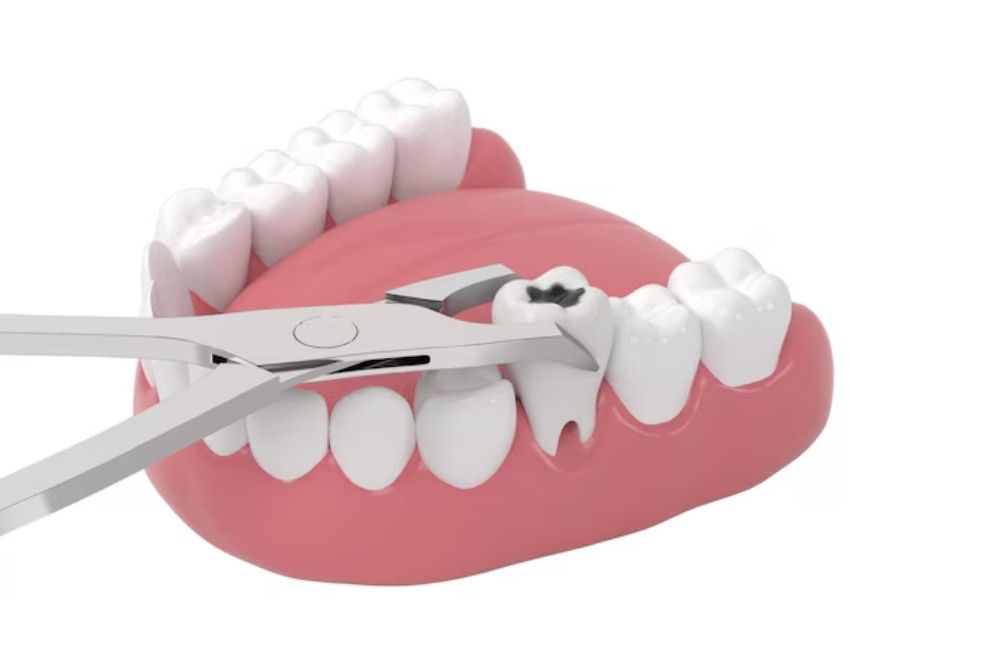How can you properly manage swelling after having a procedure at the dentist? While swelling is part of the healing process, and after procedures like tooth extractions in Prince Albert, it can sometimes be difficult to manage. While some swelling can be expected and is natural, it can be somewhat uncomfortable. Fortunately, if you follow proper aftercare steps, you can help decrease pain and swelling after tooth extraction and speed up the healing process!
In this blog, we will discuss practical and helpful tooth extraction aftercare tips, home remedies to minimize discomfort, and when to seek professional help if swelling does not go down.
Why Swelling Happens After Tooth Extraction
Swelling is the body’s natural response to trauma, which serves the purpose of guarding and healing the injury. The swelling should peak in about 24–48 hours afterward, and then decrease in the following days.
If the swelling increases significantly, or there is marked pain, or fever with the swelling, it could indicate infection or complications. You should reach out to a dentist near you to treat it as soon as possible.
What Are the Effective Tips for Reducing Swelling?
These are some effective methods for reducing swelling and supporting healing after an extraction:
- Use a cold compress: For the first 24 hours, you can apply an ice pack to your cheek for 15-20 minutes at a time.
- Elevate your head: While sleeping, keep your head slightly elevated, or at least while awake, to minimize blood flow to the area to minimize swelling.
- Avoid heat: If you plan to eat or drink, try to stick to cool or lukewarm foods because heat promotes swelling.
- Salt water rinse: After the 24 hours, gently rinse with a warm salt water solution to minimize bacteria with the salt and to provide warmth to soothe.
- Hydrate: Drink plenty of water and avoid straws – any kind of suction can cause your healing blood clot to dislodge.
How to Manage Pain and Swelling After Tooth Extraction?
While pain and swelling following tooth extraction can be frustrating, proper care can help manage both. There are over-the-counter pain relievers available that can help lessen pain when used according to instructions. Soft foods, such as mashed potatoes, yogurt, and smoothies without straws, can be easy on the site of healing.
If you notice swelling or pain for longer than 3-4 days, there could be a reason to call a professional.
Tooth Extractions – When to Seek Help
Knowing when to contact a dentist is just as important as following aftercare. If you experience severe swelling, persistent bleeding, difficulty opening your mouth, or signs of infection such as pus or a foul odour, don’t wait. Seek tooth extractions near you for a check-up or follow-up treatment.
What Are the Simple Do’s and Don’ts for Faster Healing?
Do:
- Follow all instructions from your dentist.
- Eat soft foods for the first few days.
- Keep the extraction area clean by rinsing gently.
Don’t:
- Smoke or use tobacco products.
- Touch or poke the extraction site with your tongue or fingers.
- Consume alcohol or very hot beverages during recovery.
Heal Comfortably with Prairie Pines Dental Centre!
Need guidance or follow-up care after an extraction? Prairie Pines Dental Centre gives you the expert care and advice you need to make sure your recovery is gentle, easy and straightforward. Contact us today to book your appointment and get the help and support you need to achieve a healthier smile.
FAQs
Can I exercise after having a tooth extraction?
Do not do any heavy exercise for the first 48 to 72 hours. Heavy exercise increases blood flow, which also increases swelling.
Is warm water better than cold for rinsing?
Use warm saltwater rinses after the first 24 hours. Cold compresses are better for reducing swelling in the first day.
What should I eat after a tooth removal?
Soft foods like yogurt, pudding, scrambled eggs, and mashed potatoes are safe choices.
